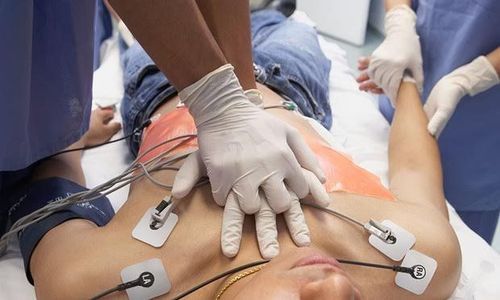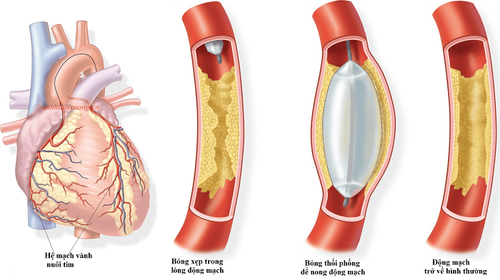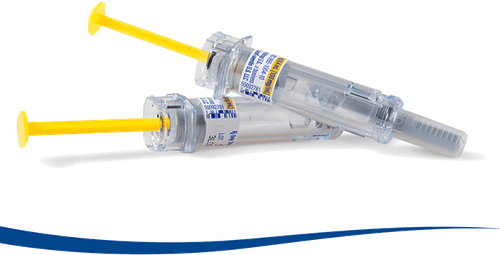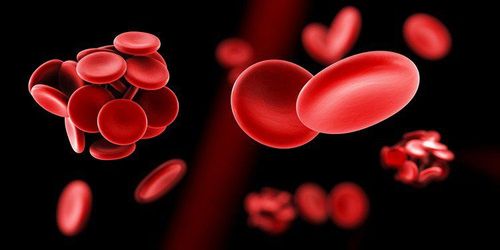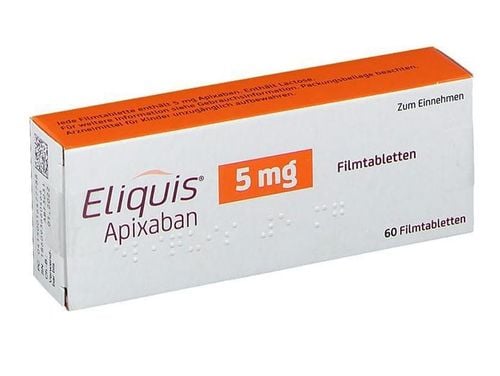This is an automatically translated article.
The article was professionally consulted with MSc.BS Nguyen Huy Nhat - Department of Medical Examination & Internal Medicine - Vinmec Danang International General Hospital.Pulmonary embolism is a blockage of an artery in the lungs. Early diagnosis and prompt treatment to prevent the condition from getting worse is essential because if left untreated, pulmonary embolism can lead to death.
1. What is pulmonary embolism?
Pulmonary embolism is a blockage of the pulmonary artery or one of its branches caused by substances in the body traveling through the bloodstream to the lungs causing the blockage. This causes the blood oxygen level to drop and the right heart to fail due to the overload.Pulmonary embolism originates from the veins of the pelvis, upper extremities or the right heart, however it mainly arises from venous thrombosis of the lower extremities.
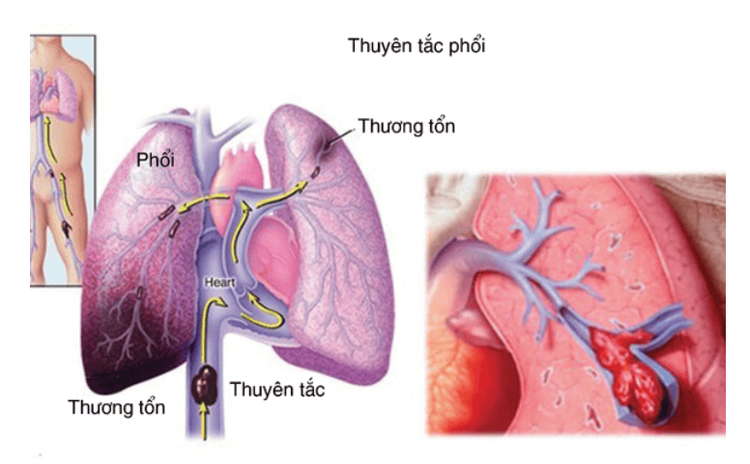
2. Diagnosis of pulmonary embolism
Diagnosis of pulmonary embolism is based on signs of the disease, tests indicated by the doctor:Signs of the disease: Pulmonary embolism often presents with symptoms such as shortness of breath, chest pain, coughing up blood, heart palpitations. rapid, dizzy, difficult breathing, wheezing, pale skin... Test: A test commonly used to find the cause of a pulmonary embolism is a CT scan of the pulmonary artery: injecting dye into the veins of the patient. hand or arm, then a CT scan of the chest to look for blood clots in the lungs. To find blood clots in the legs, a leg ultrasound can be used. To assess the severity of a pulmonary embolism, the patient will have an echocardiogram. Blood tests to look for blood clots and damage to the heart or damage to other organs. In addition, it is necessary to perform tests to detect venous thrombosis such as:
D-dinner blood test Contrast-enhanced venography Magnetic resonance imaging Ultrasound To detect genetic defects in the system coagulation system requires a blood test.
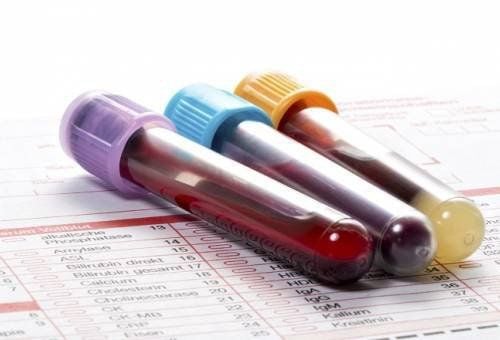
3. Treatment of pulmonary embolism
The mortality rate of patients in the hemodynamically unstable group is approximately 30%, if untreated. This rate will decrease to 15% if treated promptly.Patients with pulmonary embolism will be treated according to the following methods:
Anticoagulant therapy: usually the patient will be prescribed anticoagulants to break up the blood clot. In addition, there are drugs that prevent the growth of blood clots, prevent the spread of blood clots (warfarin drugs, heparin drugs). Pulmonary embolism mortality can be reduced with heparin. Surgery: To remove a blood clot that is too large in the lung, the patient will be prescribed surgery to remove it through a catheter threaded through a blood vessel. To position the filter in the main vein, a catheter can be used, which will take over the function of preventing blood clots from entering the lungs. This method is often used when the patient cannot take anticoagulants or anticoagulants are not effective.
Regularly exercise to prevent blood from stagnation Currently, at Vinmec International General Hospital, fibrinolysis is being applied to emergency treatment of patients with pulmonary embolism. With modern imaging equipment, CT perfusion results are available within 7 minutes and performed routinely.
Techniques are performed by a team of qualified and experienced medical doctors at Vinmec healthcare system nationwide:
Doctor Huynh Kim Long - Vinmec Da Nang Doctor Ton That Tri Dung - Vinmec Da Nang Doctor Nguyen Thuc Vy - Vinmec Nha Trang Doctor Luong Vo Quang Dang - Vinmec Phu Quoc
Please dial HOTLINE for more information or register for an appointment HERE. Download MyVinmec app to make appointments faster and to manage your bookings easily.





